Berners Hotel, the London Edition
By the Survey of London, on 21 July 2017
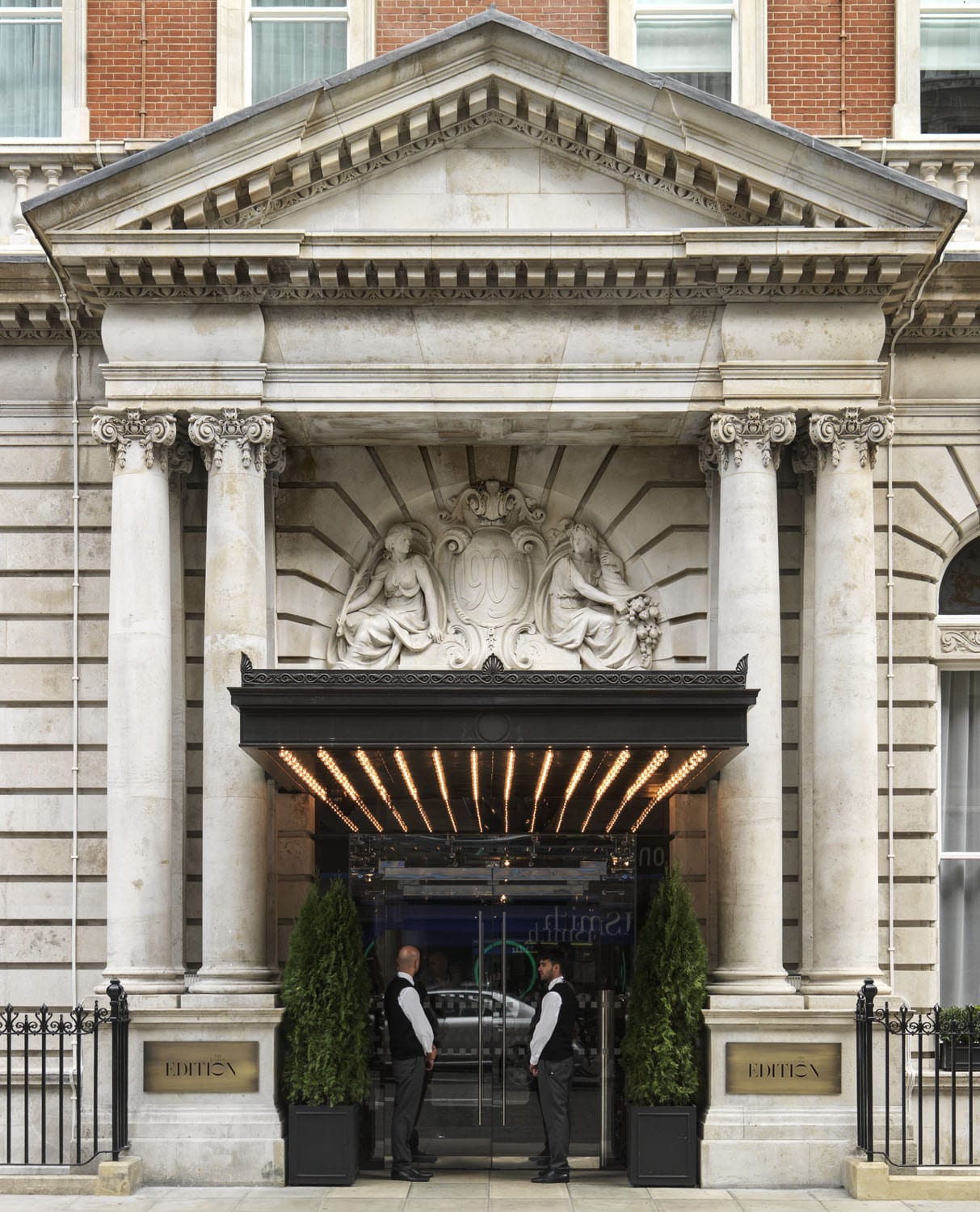
Berners Hotel, Marylebone, now the London Edition. Entrance. Photographed in 2013 by Chris Redgrave for the Survey of London © Historic England
The Berners Hotel is a rare instance of continuity in the area around Berners and Newman Streets. Though the current building dates only from 1905–11, the hotel can be traced back to 1826. In that year the pair of houses at 6-7 Berners Street were converted from a bank into a hotel, involving the dismantling of a massive strong-room at the back constructed of iron and stone. The bank had been established in 1792 by the firm of De Vismes, Cuthbert, Marsh, Creed & Company. Later known as Marsh, Sibbald & Co., it failed notoriously when one of the partners, Henry Fauntleroy, was hanged for forgery in 1824.

Berners Hotel. Photographed by Chris Redgrave for the Survey of London © Historic England
No such notoriety was attached to the hotel. It was one of many, small family-run establishments in the vicinity of Oxford Street, where fashionable comers and goers mixed with longer-term residents. From the 1820s the private houses in Berners Street were increasingly being turned into lodging houses or shops. Pietro Rolandi’s Italian bookshop was one such at No. 20, a haven for literary and political exiles, which first opened in the same year as the hotel.
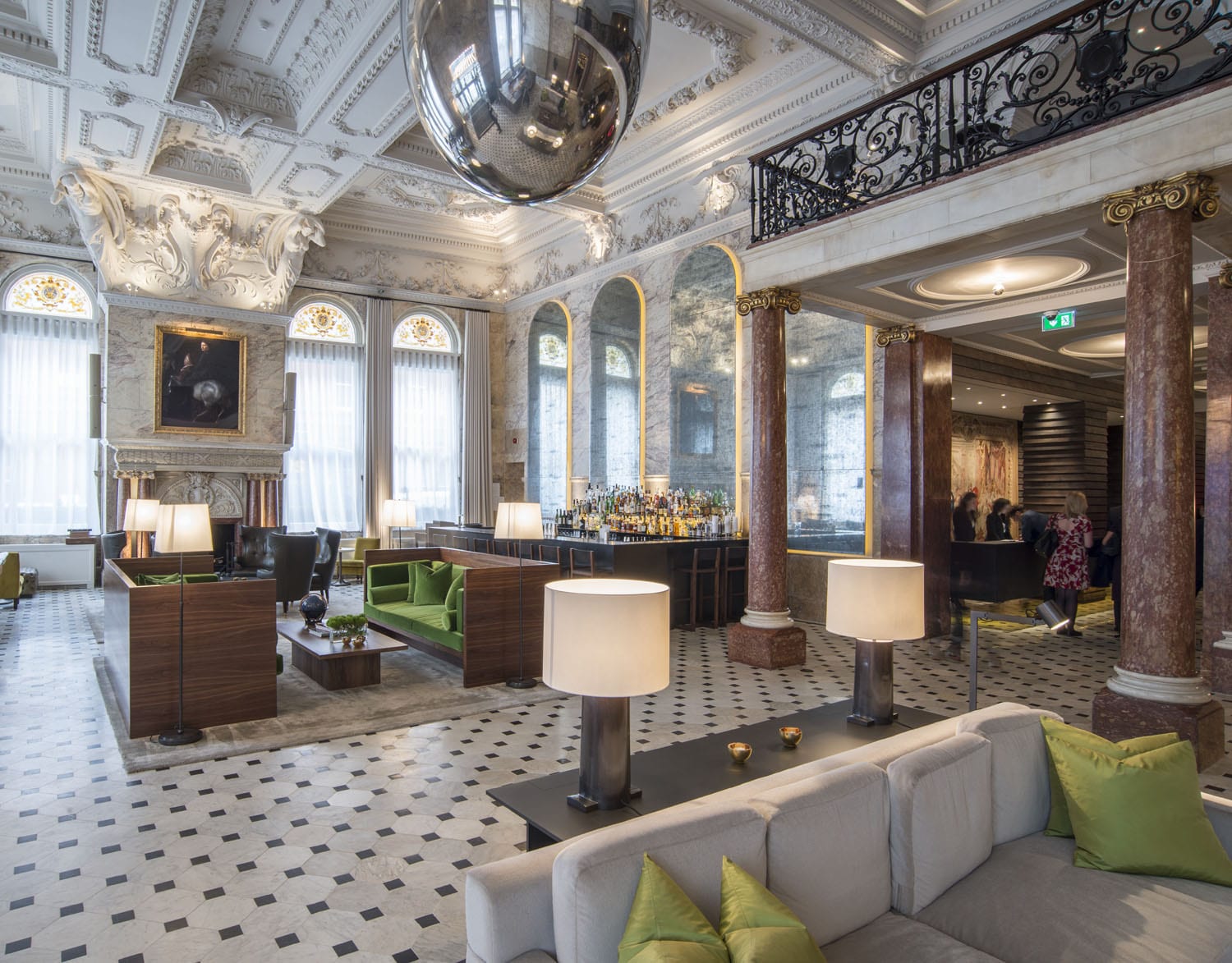
Berners Hotel entrance lobby. Photographed by Chris Redgrave for the Survey of London © Historic England
In 1880 the hotel’s then owner, Richard Kershaw, sold up to the Berners Hotel Company, which acquired building and fittings alike, barring a piano belonging to Miss Kershaw and an assortment of display cases of stuffed birds. The company lasted a decade, being sold on in 1890 through Thomas Ward, of the London Music Publishing Company, to Berners Hotel Ltd among whose subscribers journalists (Henry Sutherland Edwards and George Augustus Sala) and minor musicians were strong. The hotel was renovated, and shamelessly puffed by the new management for its association with Fauntleroy and its ‘interesting woodwork, carvings, painted ceilings, &c’. Appropriately, in 1895 Ward, its managing director, was charged with the Fauntleroy-like offence of forging bills of exchange to do with the supply of beer and spirits to the establishment.
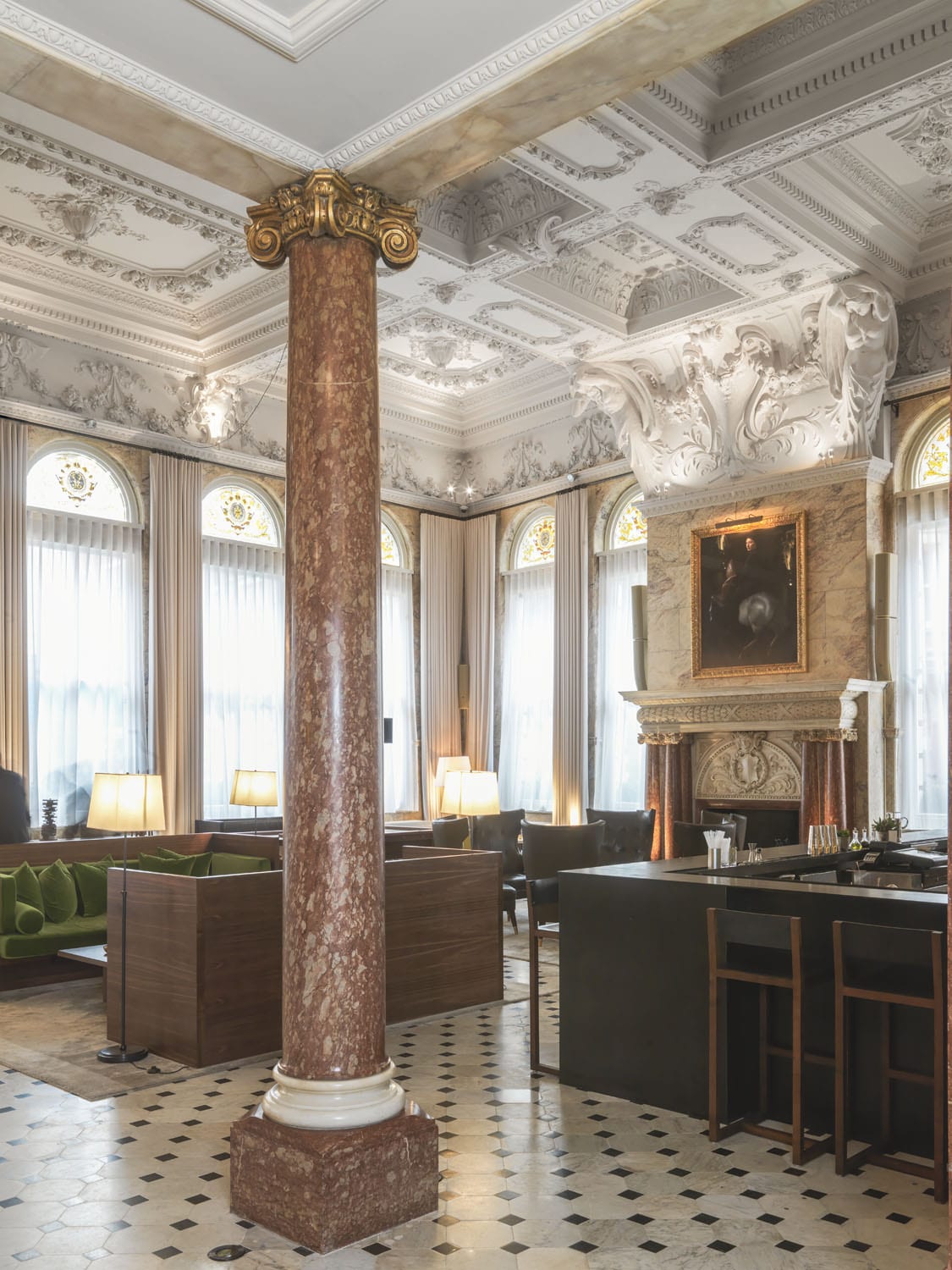
Berners Hotel entrance lobby. Photographed by Chris Redgrave for the Survey of London © Historic England
Not long afterwards another hotel opened near by in Newman Street, the York Hotel. Its manager was Emmeline Lawrence, known as Mrs Mary Clark. A Welshwoman of considerable ambition, she oversaw the expansion of the York Hotel and soon became manager of the Berners as well. Backed by a fresh company, the Hotel York Ltd, she determined to rebuild the Berners Hotel on a much-enlarged site. Slater & Keith were commissioned to design the new building, which went up in stages. The first part completed was at the back, at 82–83 Newman Street and 73–75 Eastcastle Street, wrapping round the Blue Posts pub at the corner. The second, much larger western phase hit a snag when two Eastcastle Street houses, scheduled for demolition but still occupied, collapsed in 1908, killing eight men, all Austrian, German, Italian or Swiss employees of the hotel. The management also fought but lost a long legal battle with the LCC about fire doors or screens in the hotel corridors.

Berners Hotel restaurant interior, view towards north west. Photographed by Chris Redgrave for the Survey of London © Historic England
Once the rebuilding of the Berners Hotel had been completed in 1910, it was connected to the York Hotel by a subway under Eastcastle Street. The two hotels thus linked both had their main ground-floor public spaces facing west towards Berners Street, where spacious coffee rooms, lounges and main stairs were to be found. But they looked quite different. The York with its two corner tourelles belonged to the late Queen Anne manner affected by Slater in the 1890s, whereas the later and bigger block of the Berners, perhaps attributable to his partner Keith, is an altogether more pompous Edwardian production, neo-Georgian in style touched by Frenchness, with plenty of Portland stone and carving to set off the red brick, a pedimented entrance, and two storeys in the mansard roof. The lounge and coffee room were both double-height spaces, caked in opulent Edwardian plasterwork.

Berners Hotel restaurant interior, view towards the south. Photographed by Chris Redgrave for the Survey of London © Historic England
In 1912–13 Mary Clark tried to expand her hotel empire with an even larger scheme for the Princess’s Theatre site on Oxford Street, and in 1914–15 she ventured on a further new building at 74 Newman Street housing garages for her clients’ cars on two levels underneath five floors of open dormitories for maids. This landed her in financial trouble and she had to go. Under her successor, Henry L. Clark (no relation), the two hotels prospered. In the late 1920s hot and cold water, electric fires and phones were installed in every room; at this time the hotels claimed to be able to sleep 500–600 per night. The smaller York Hotel or Hotel York survived Government requisitioning in 1918 to acquire an extension designed by Slater & Moberly facing Newman Street (Nos 78–79) in 1932. But after it was requisitioned again during the Second World War it was not reopened, becoming a nurses’ home for the Middlesex Hospital in 1946, and then in 1997 a block of flats. The Hotel York Ltd maintained its independent management of the Berners Hotel till 1957.
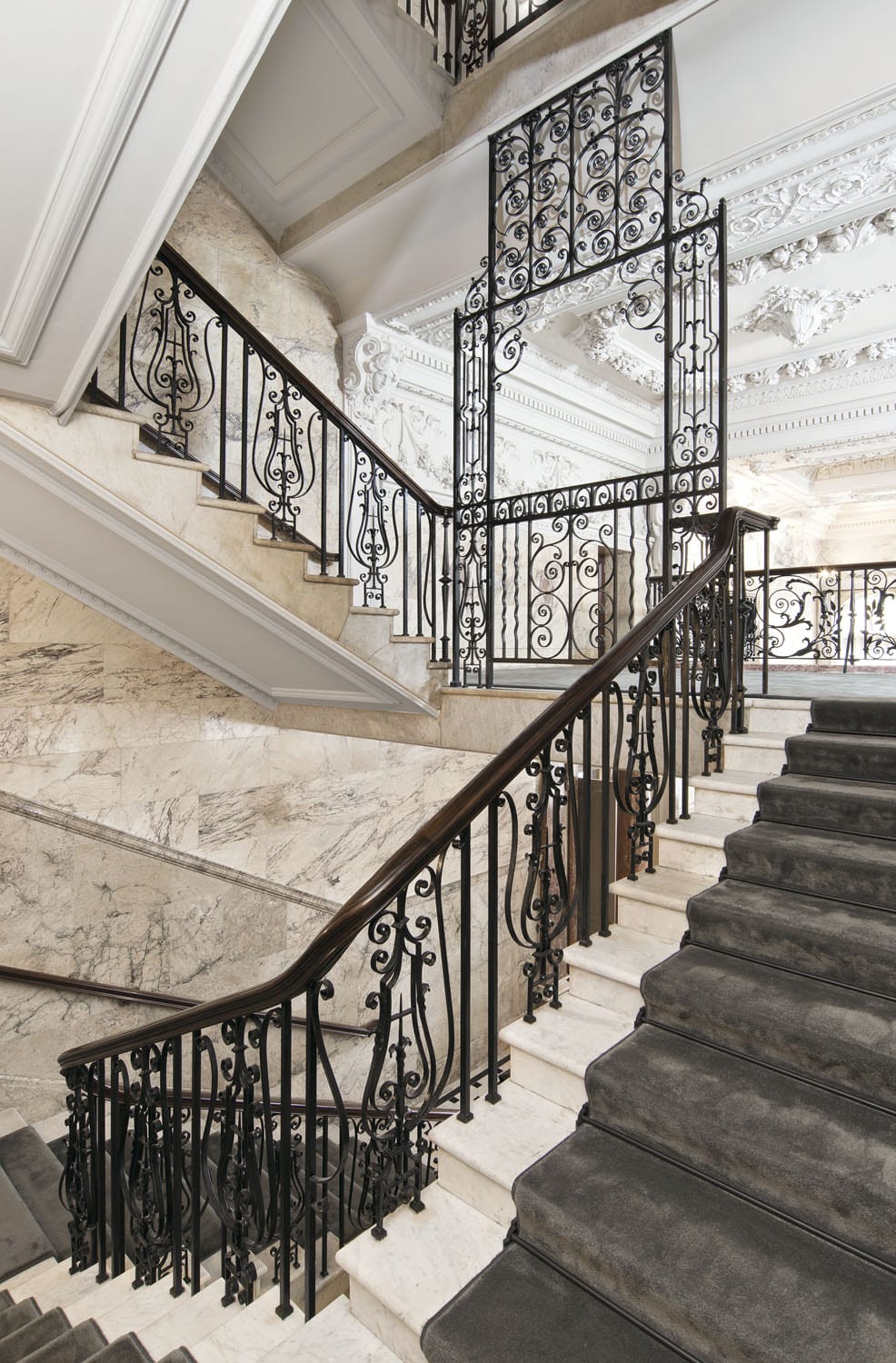
Berners Hotel, view of main stair from north-west. Photographed by Chris Redgrave for the Survey of London © Historic England
In 1972 the hotel was under threat, but following the intercession of John Betjeman (‘I don’t know who the architect was but he was somebody pretty good’) it was listed and survived. A long period of closure ended in 2013 when the Berners Hotel reopened as the London Edition, fully restored at the behest of Ian Schrager (as at the Sandersons Hotel), here working with ISC Design Studio and Marriott International. The main spaces have been generously restored but, as the management is keen to insist, ‘The London EDITION is no period piece … It is a potpourri of styles that only a sure hand could pull off’. [1]
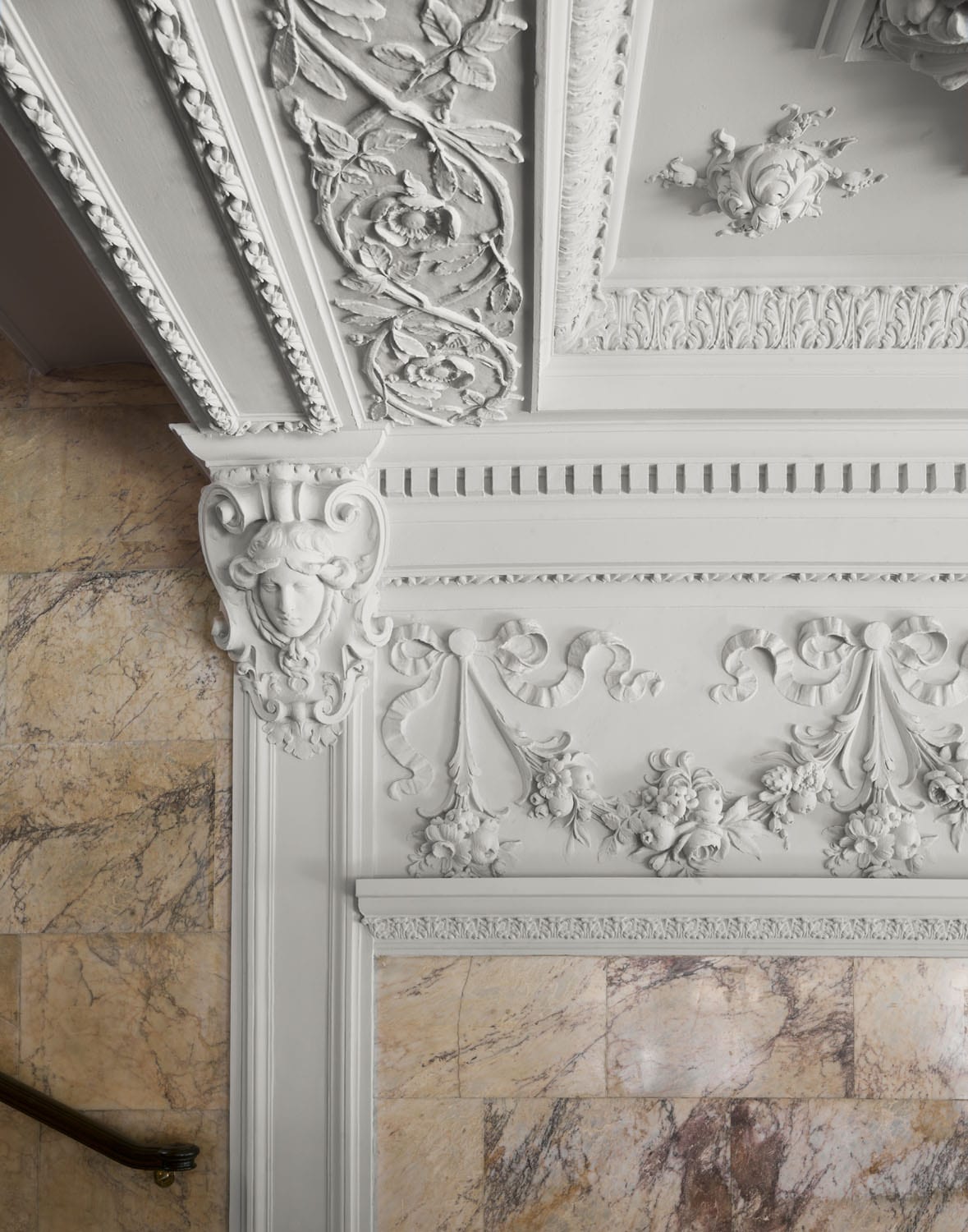
Plasterwork detail, Berners Hotel. Photographed by Chris Redgrave for the Survey of London © Historic England
1.London Edition press release 2013
6 Responses to “Berners Hotel, the London Edition”
- 1
-
2
Staircases in South-East Marylebone | UCL The Survey of London wrote on 9 November 2018:

[…] of Slater & Keith. To read a full account of the Berners Hotel in an earlier blog post, please click here. (© Historic England, Chris […]
-
3
Ana Sanchez wrote on 13 April 2022:
My mother and father actually worked and met in the Berner’s hotel. She was a chambermaid and he was a waiter. I have read the story of the hotel and am fascinated about its history and grandiosity. They worked there around 1960. I wonder if the Berner’s was so beautiful then as it is now.
Was fascinated to read about Newman Street. My mother mentioned many times that she lived in maids quarters in Newman Street, and now I have actually read it here.
The Berner’s not only had guests, but the employees fell in love there too. Here I am as proof.
Thank you for a beautiful reading of the history. -
4
Andrea Kaufman wrote on 18 October 2022:
Back in the 1980s my late father and I would have breakfast at the Berners. Then we would go to our offices! Him to Mortimer House and me to Foley Street. We would drive from Essex and park an underground garage. Those were the days!
Thank you Dad!
24 years today you past -
5
Jose K. wrote on 2 March 2023:
I hope to visit again sometime. I stayed here on my first visit to London in 1954.
-
6
Margrit Petersen wrote on 19 October 2023:
Hallo. 1970 habe ich hier in der Rezeption gearbeitet. Es war die schoenste Zeit medinės Leben.
Es freut mich, dass es wieder ein Berners Hotel gibt.
 Close
Close



The original owners of the Berners Hotel in 1826 were Thomas & Louisa Ashton who owned and operated the hotel until at least 1871 (census). They ran many ad’s in The Lancaster Gazette